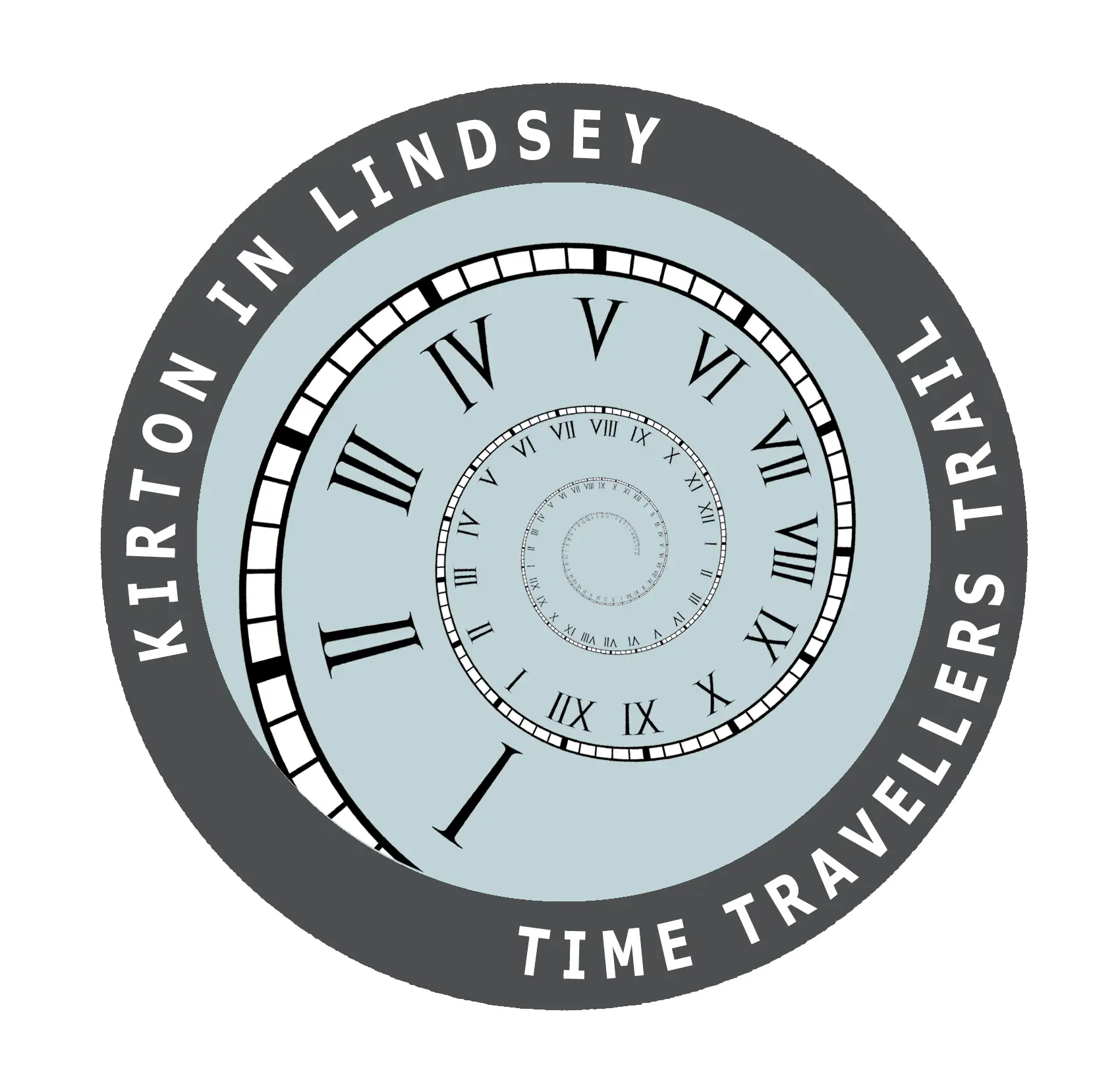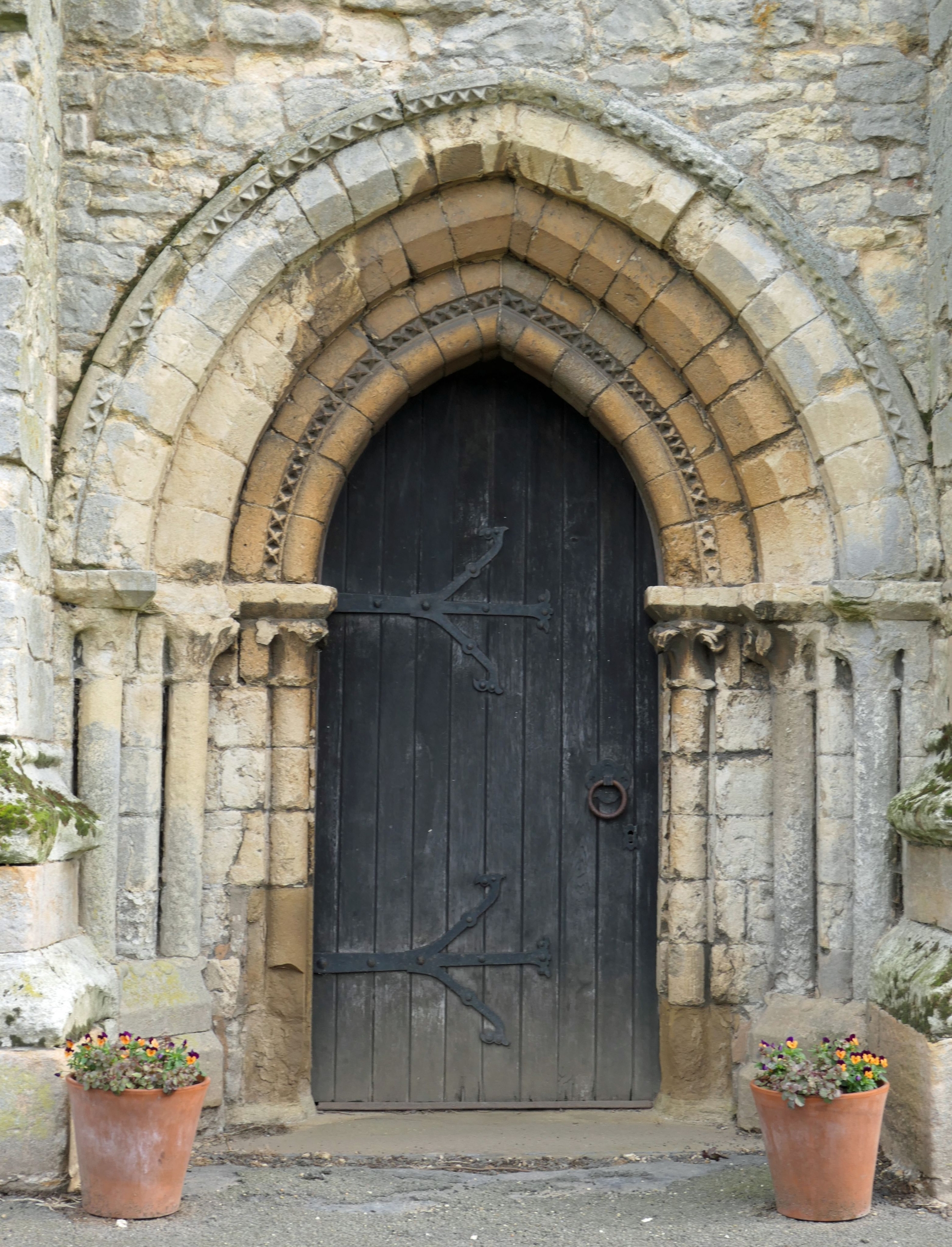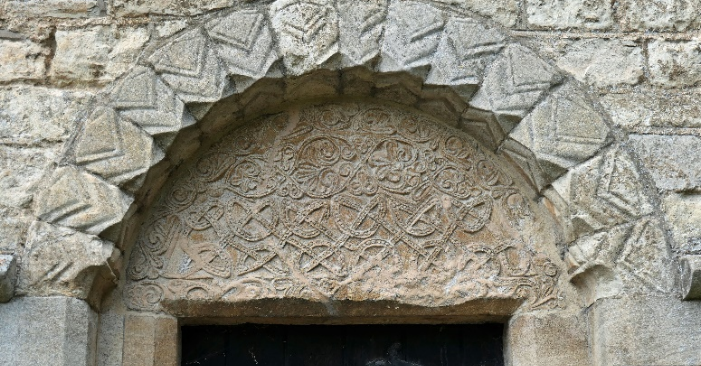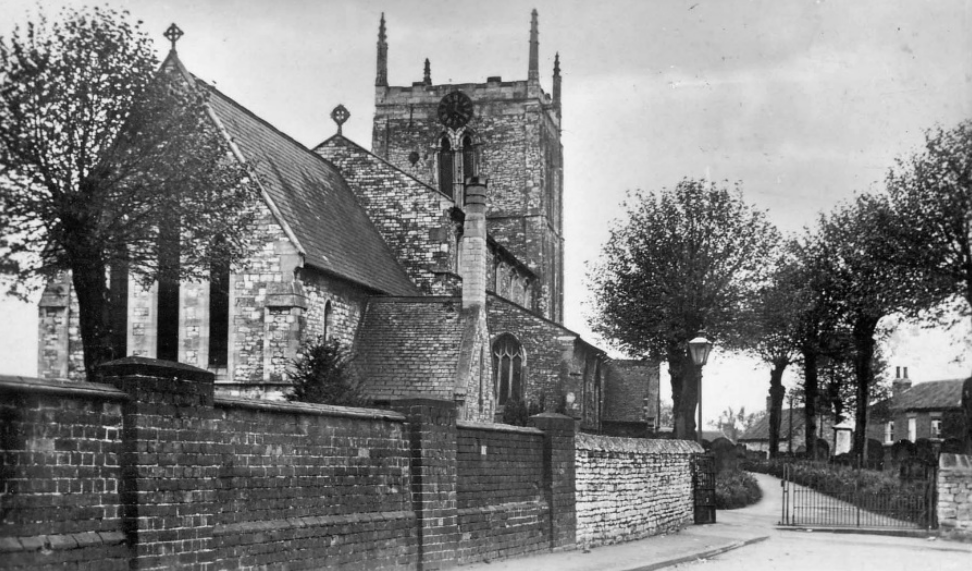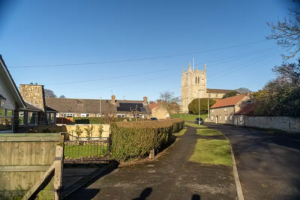14
St Andrew’s Church
The church you see before you was commenced around 1140 in the reign of King Stephen but construction is likely to have continued into the 13th century during the reigns of King John and King Henry III.
There is some evidence for an earlier, Anglo-Saxon church and many believe that Kirton was a very important place in early Christianity as the very name Kirton means church town/farm and it is listed in the Domesday Book (1086) as Chirchetone.
The History
The tower dates from the late 12th or early 13th century with buttresses and a perpendicular style (14th to early 16th century) parapet added later. Pevsner, in his ‘Buildings of England’ guides (1964) describes the tower as ‘an impressive piece of the 13th century’.
The western doorway has an arch of three layers supported by pillars. The dog-tooth ornamentation is typical of the Norman style of building.
Go round to the South side and you will see a tympanum over the priests’ door showing Celtic inspired scrollwork.
Some believe that this is Anglo-Saxon but most experts now agree that it was more likely built at the same time as the church but inspired by older styles.
The Restoration
By the mid-1800s the church was in poor repair and in 1860 the church underwent major restoration both internally and externally. These next two pictures date from that period.
The first shows how the church looked before the restoration and the second shows the chancel being demolished.
This last photo is from 1934 and shows the wall at the front of the church. This was knocked down in the 1960s.
The history of the church is long and detailed and the interior is as interesting as the exterior. The church is kept closed when not in use so for more information on opening times and access, please visit their website: Home (standrewsunitedchurch.org.uk)
Now turn left into Cornwall Street.
